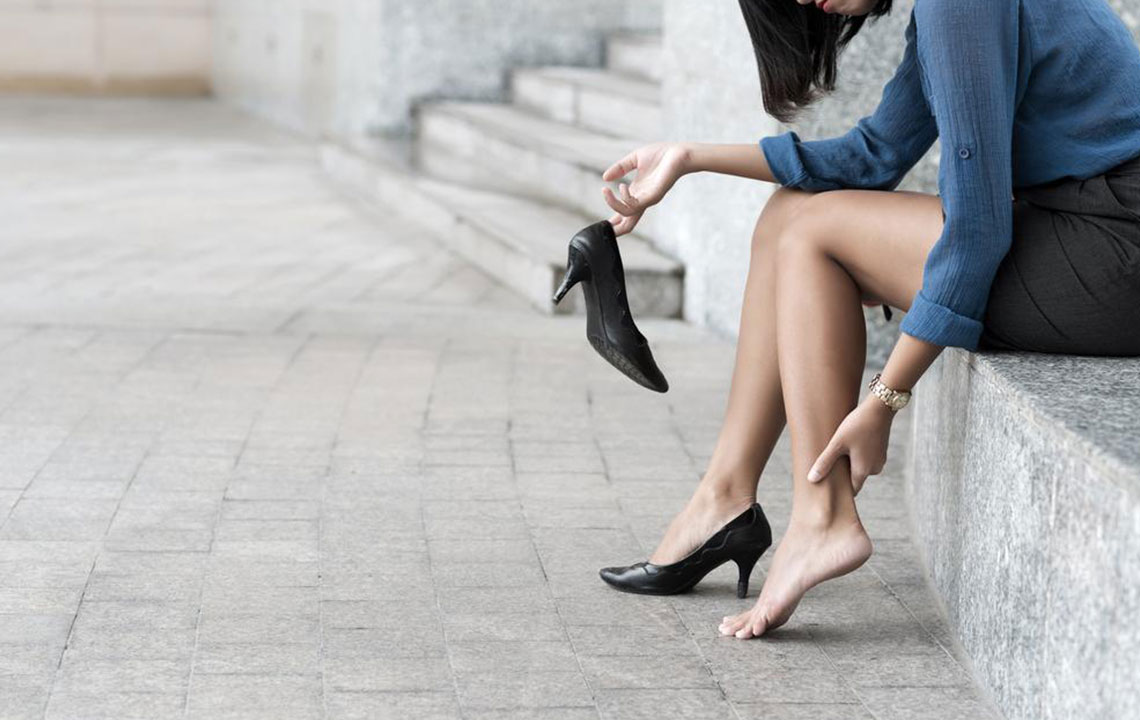All You Need To Know About Heel Pain
The heel is a supportive bone that plays an essential role in defining the arches of the foot. It is the understructure that helps in balancing the weight of the body. Whenever the heel is overused or excessive force is exerted, a sharp pain is felt. Heel pain is usually acute in nature and its intensity depends on the reason behind its occurrence.
If the pain leads to swelling or makes it difficult for you to walk, movement should be restricted post-haste. Proper rest is the best home remedy that is tried and tested for heel pain. It is generally not life threatening, yet, it is advisable to visit a doctor to accurately diagnose the cause.

- Plantar Fasciitis – Exertion of extreme pressure on the foot can rupture the ligament called plantar fascia. This ligament is responsible for linking the heel to the other part of the foot. This ailment is the most common cause that results in pain in the bottom region of the heel.
- Achilles Tendonitis – The most important function played by theAchilles or calcaneal tendon is connecting the calf to the heel. Its inflammation can make the heel stiff as well as sore and ultimately lead to heel pain.
- Injury –Heel pain through injury is a routine problemencountered by sportspersons and athletes.
Heel pain gets aggravated by obesity, standing for long hours at a stretch, regularly lifting hefty weights,immoderate exercise or no exercise at all. Individuals having flat feet also complain of heel pain. Wearing high heels or uncomfortable and ill fitting shoes may, also, worsen the condition. Walking barefoot is strictly prohibited for those suffering from heel pain. The back and under regions are the most affected parts of the heel.
Bouts of heel pain occur after extended periods of immobility such as while getting out of bed, though limited amount of rest is said to cure the pain. They are notably intense and accompanied by swelling, redness and numbness. A heel spur may also bea peculiar symptom of heel pain. Difficulty can be experienced in performing daily tasks specifically due to tenderness and stiffness of the heel. Bending the foot downwards or standing on toes seem next to impossible.
If your pain doesn’t go away even after a week, it is best to visit a specialist. Your podiatrist, a doctor that particularly caters to foot diseases, may ask questions to delve deeper into the history of the case. Clinical examination may be assisted by X-rays, MRI or bone scans, if it hints towards some serious medical condition.
Treatment of heel pain begins with stabilizing the heel bone, rest and icing or heat. Light exercises such as those to strengthen the calf muscles and Achilles tendon are practiced. Bringing the body mass index under control through reduction in weight has also proved to be effective.Non steroidal anti-inflammatory medicines, corticosteroid injections may provide temporary relief from pain. Invest your time in warm up and cooling down sessions if you’re a sports person.
A surgery known as plantar fasciotomy, may also have to be conducted to treat heal pain caused by plantar fasciitis. This is considered as the last option when no other method works for curing the problem. Removal of heel spurs surgically is also a common practice.A device called night splint, is worn overnight and it stretches the tendons and ligaments of the heel region placing them in the right position.

